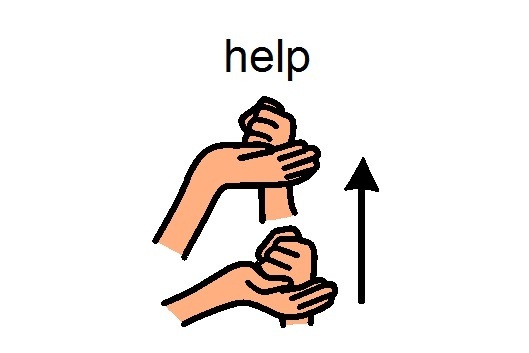
Help Card
Help Card
Here is an example of a help card made with Boardmaker.

When to use:
- Use to encourage taking initiative and to build independence in students.
- Use with students who may not verbally ask for help or raise their hand.
How to use:
The student can use the card to ask for help in a number of ways depending on the setting and the student’s abilities:
- touching or pointing to the card.
- handing the card to the teacher.
- placing the card/designated item on a marked spot on the desk or a token board.
- holding the card up.
- turning over a card that is placed on their desk.
Respond as quickly as you are able. When the student asks for help in any of these ways, model saying “I need help.” or “Help, please.”
Teaching Using a Help Card
- Create a situation where the student will need help, such as placing a toy on a shelf out of reach, opening a bag of crackers, or withholding a supply necessary to complete an assignment.
- Put the help card where the student can see it and within reach. Tell them “This is your help card. You can use it to ask for help.” When the student starts to get upset or unsuccessfully attempts to retrieve the item, tell them “You need help. Use your help card to get help.”
- Immediately help the student (give them the toy that was out of reach, open the bag of crackers, etc.) and reinforce them with praise (i.e. “good job asking for help!”) or other identified reinforcer.
- When the student asks for help in any of these ways, model saying “I need help.” or “Help, please.”
Keep help cards within reach for the student everywhere throughout the day. During the teaching process, continue to set the student up for multiple daily opportunities to use their help card successfully.
Tips:
- Use with students who exhibit challenging behaviors when frustrated. It is especially important to respond immediately to teach this as an alternate behavior for these students.
- Use with students who may sit passively and not alert the teacher when help is needed.
- Classwide systems may be implemented if the teacher finds it useful.
Variations:
- A help signal can be something other than a card. One example is having the student place their water bottle in a specific place (tape X on desk) to signal they need help.
- An object, such as a cup, can be tethered to a desk using tape and string or velcro. When a student needs help, they will place that item on their desk.
